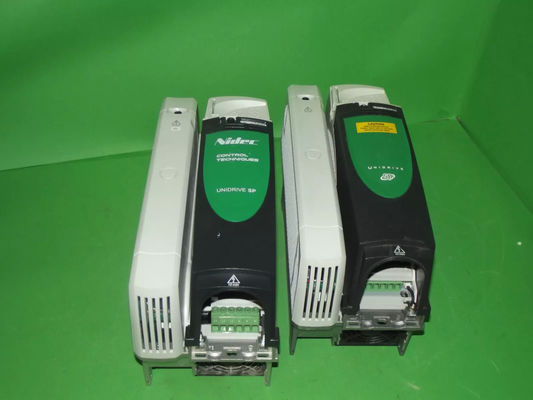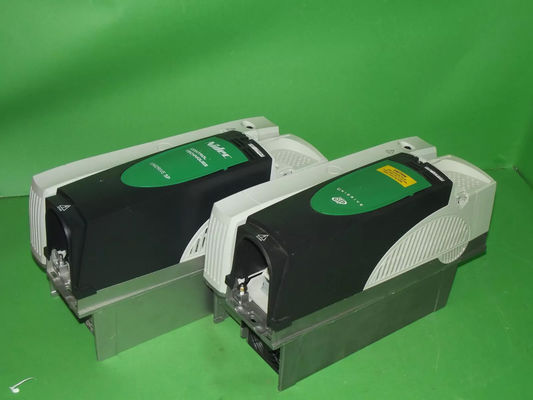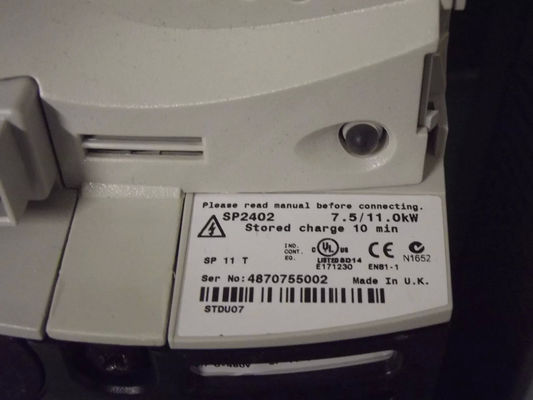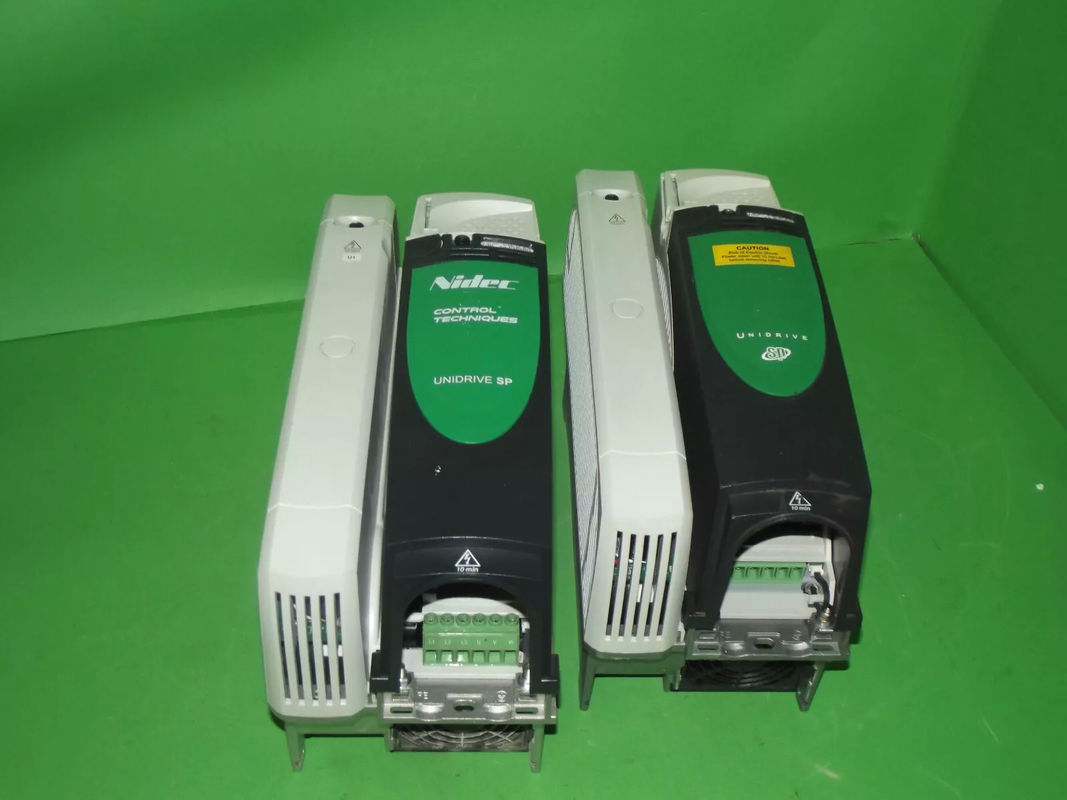Product Description:SP2402
The Emerson SP2402 is another member of Emerson’s ControlWave family of Programmable Logic Controllers (PLCs), designed for industrial automation and process control applications. It offers enhanced capabilities and additional features compared to earlier models, making it suitable for a wide range of industries, including manufacturing, process control, and utilities.The SP2402 is a modular and scalable PLC that provides high-performance control, flexibility, and reliability. It is optimized for applications requiring complex automation tasks, real-time control, and high availability. The SP2402 integrates seamlessly into modern industrial control environments and supports various communication protocols for both distributed and centralized control.
Features:SP2402
-
Processor and Performance:
- The SP2402 is equipped with a high-speed CPU designed for demanding real-time control applications.
- CPU Speed: Similar to the SP2401, it likely features a multi-core processor running at speeds of up to 1 GHz or higher, providing fast data processing and low-latency control.
- Scan Time: Fast scan times of 1-10 milliseconds (depending on the complexity of the program), enabling real-time decision-making for automation tasks.
-
Memory and Storage:
- The SP2402 offers 512MB of RAM (or more) for program execution, along with 256MB or more flash memory for storing control programs and configuration settings.
- External Memory Support: It can also support additional storage or backup solutions, offering flexibility for data logging or large-scale applications.
-
Modular I/O System:
- Digital and Analog I/O: The SP2402 supports both digital I/O (discrete inputs/outputs) and analog I/O (for sensors and control loops), with the capability to expand up to several hundred I/O points depending on the system configuration.
- Expandable I/O: Supports additional I/O modules for remote control, distributed networks, and scalability.
- Signal Processing: Offers high-precision analog-to-digital conversion, suitable for high-fidelity control tasks (e.g., temperature, pressure, flow rate monitoring).
-
High-Speed Inputs and Outputs:
- High-Speed Counters: The SP2402 can handle high-speed pulse counting, which is ideal for applications such as rotary encoders, flow meters, or speed monitoring.
- Pulse Width Modulation (PWM): The PLC supports PWM outputs for controlling motors, valves, or other equipment requiring variable-speed control.
-
Advanced Communication Protocols:
- Ethernet/IP: Full support for Ethernet/IP for high-speed data transfer, remote control, and integration with other systems like SCADA or DCS.
- Modbus TCP/RTU: The SP2402 can communicate over Modbus TCP/IP or Modbus RTU, making it compatible with a wide range of industrial devices such as sensors, actuators, and other PLCs.
- Profibus DP: Supports Profibus DP for connecting to remote I/O devices and other automation equipment.
- DeviceNet: Integration with DeviceNet for communicating with industrial networks and devices.
- CANopen: Optional support for CANopen networks for machine-level communication.
- RS232/RS485: Serial communication support for legacy systems or low-speed communication with sensors and actuators.
-
Enhanced Safety and Redundancy Features:
- Redundant CPUs and Power Supplies: Available for critical applications, ensuring high system availability by providing backup processors and power supplies in case of failure.
- Hot-Swappable Modules: The ability to replace modules while the system is running, ensuring minimal downtime and higher system reliability.
-
Integrated Web-Based Interface:
- The SP2402 provides a web-based interface for remote monitoring and configuration. This feature allows operators to access the PLC through a browser for status updates, diagnostics, and troubleshooting.
- Web Server: It integrates a web server for visualization and control, allowing for access from virtually anywhere with network connectivity.
-
Real-Time Clock (RTC):
- The PLC includes an integrated real-time clock, which is crucial for time-based control and scheduling applications. This is especially useful in applications such as batch processing, where precise timing is critical.
-
Diagnostics and Troubleshooting:
- LED Indicators: Diagnostic LEDs on the front panel provide quick feedback on system health, including processor status, communication status, and I/O operation.
- Error Logging: The SP2402 logs errors and faults, which can be used to diagnose system issues and improve troubleshooting efficiency.
-
Security Features:
- The SP2402 offers robust security features, including password protection for different user access levels, ensuring only authorized personnel can make changes to the control system.
- Encrypted Communication: For secure communication over Ethernet, support for encryption standards such as TLS/SSL is included.
Technical Parameters:SP2402
-
CPU Processor:
- Multi-core processor, typically based on ARM or x86 architecture for high-performance control.
- Clock Speed: Approximately 1 GHz (varies depending on model configuration).
- Scan Time: Real-time scan time typically in the range of 1–10 ms (depending on the complexity of the control program).
-
Memory:
- RAM: 512MB to 1GB (depending on configuration).
- Non-volatile Storage: 256MB to 512MB flash memory (can be used for program storage, configuration files, and data logging).
- External Storage Support: USB ports or SD card slots for expanding memory and logging data.
-
Real-Time Clock (RTC):
- Integrated RTC with battery backup, useful for time-based control and scheduling.
-
Modular I/O Expansion:
- Digital I/O: Configurable 16 to 64 digital inputs and 16 to 64 digital outputs per module, depending on the module type (sinking/sourcing, 24V, 48V, etc.).
- Analog I/O: Configurable 4 to 16 channels per module for analog inputs (AI) and outputs (AO).
- Resolution: 12-bit or 16-bit resolution for precise analog measurement and control.
- Input Ranges: 0-10V, 4-20mA, and other ranges as required.
- High-Speed I/O: For handling applications like pulse counting, encoder feedback, and PWM output.
- High-Speed Counters: Up to 100 kHz or more, depending on the specific configuration.
- PWM Outputs: For motor control or variable-speed applications.
-
I/O Modules Types:
- Digital I/O: Includes isolated inputs/outputs, relay outputs, and high-current relay outputs.
- Analog I/O: Provides high-precision measurement with 16-bit or 12-bit resolution.
- Specialized Modules: For temperature control, positioning, and motion control applications.
-
Remote I/O: Can support remote I/O systems connected over Ethernet/IP, Modbus, Profibus, or DeviceNet for distributed control.
-
Ethernet/IP:
- Ethernet-based communication for high-speed data exchange with remote I/O, SCADA systems, and other PLCs.
- Port Type: Dual Ethernet for network redundancy (optional).
- Communication Speed: 10/100/1000 Mbps for robust data transfer.
-
Serial Communication:
- Modbus RTU (RS-485) and Modbus TCP for communication with industrial devices.
- RS-232/RS-485 Ports: Typically 2 or 4 serial communication ports for connecting to legacy devices or for remote monitoring.
-
Fieldbus Support:
- Profibus DP: For controlling remote I/O and integration with other automation devices.
- DeviceNet: For industrial control network communication.
- CANopen: For machine-level communication, often used in motion control or embedded systems.
-
Wireless Communication (Optional):
- Integration with Wi-Fi or ZigBee modules for remote monitoring and control in certain configurations.
-
USB:
- Typically includes USB Type A and Type B ports for program upload/download and connection to HMI or configuration devices.
-
Redundant CPUs:
- Optional redundant processors for high-availability applications. In case of CPU failure, the secondary CPU automatically takes control with minimal downtime.
-
Redundant Power Supplies:
- Dual power supply configuration for enhanced reliability, ensuring continued operation in case of a power supply failure.
-
Hot-Swappable Modules:
- Allows the replacement of I/O modules, communication modules, or power supplies without interrupting system operation.
-
Watchdog Timer:
- Integrated watchdog timer to monitor the PLC’s health and ensure real-time task execution without delay.
-
Programming Languages:
- Supports IEC 61131-3 standard languages:
- Ladder Logic (LD) for traditional control logic.
- Function Block Diagram (FBD) for process-oriented control.
- Structured Text (ST) for complex mathematical and logical algorithms.
- Sequential Function Chart (SFC) for sequence-driven processes.
- Instruction List (IL) (deprecated but still supported for legacy applications).
-
Integrated Development Environment:
- Emerson provides tools like ControlWave Designer or Automation Studio for creating and debugging control programs.
-
Data Logging and Event Recording:
- Ability to log process data, events, and alarms, with customizable logging intervals.
- Supports integration with cloud platforms for advanced data storage and analytics.
-
Web Interface:
- Integrated web-based user interface for remote monitoring and control via any browser.
- Security:
- Supports password protection and user authentication to control access to the PLC configuration.
- Encryption: Secure communication via TLS/SSL protocols for data security over Ethernet.
- Safety Integration:
- The PLC can be configured to meet functional safety standards such as IEC 61508 and IEC 61511, including integration of Safety Instrumented Systems (SIS) and Emergency Shutdown Systems (ESD).
- Power Supply Input:
- Typically, 24V DC power input (can vary depending on the system configuration).
- Redundant power supply options for critical systems.
- Power Consumption:
- Depends on configuration and load, but generally around 20-40W for the base system, with more power required as additional modules (I/O, communication) are added.
-
Operating Temperature:
- Typically 0°C to 60°C (32°F to 140°F), but may vary depending on specific modules or configurations.
-
Storage Temperature:
- Typically -20°C to 85°C (-4°F to 185°F).
-
Humidity:
- Operating relative humidity typically in the range of 5% to 95% (non-condensing).
-
Protection Rating:
- Usually IP20 for control modules; higher-rated enclosures (IP65/IP67) are available for specialized applications (outdoor or harsh environments).
-
Control Module:
- Height: 120–150 mm (varies by model).
- Width: 100–200 mm (depending on number of I/O and communication ports).
- Depth: 120–150 mm.
-
I/O Modules:
- Standard 19-inch rack-mounted or compact modular design, depending on the configuration.
- CE Marking: Compliance with European Union safety, health, and environmental protection standards.
- UL Certification: For use in North America.
- CSA: Certification for use in Canada.
- RoHS Compliance: Meets environmental standards for the restriction of hazardous substances in electronics.
- IEC 61508: Functional safety certification (for certain models).
|
Applications:SP2402
. Process Control Systems:
- Chemical Processing: The SP2402 is suitable for controlling processes such as mixing, temperature regulation, flow control, and chemical reactions in industries like petrochemical, pharmaceuticals, and food processing.
- Water and Wastewater Treatment: The PLC can automate processes such as filtration, chlorination, and water distribution, ensuring consistent water quality.
- Oil & Gas: It is used for controlling flow lines, valves, pump stations, and safety shutdown systems, critical for maintaining efficient and safe operations in oil and gas facilities.
2. Manufacturing Automation:
- Discrete Manufacturing: The SP2402 is ideal for applications like controlling assembly lines, packaging, sorting, and robotic systems in industries such as automotive, electronics, and consumer goods manufacturing.
- Material Handling: The PLC controls conveyor belts, robotic arms, and material sorting systems, improving the efficiency and automation of warehouses, logistics, and distribution centers.
3. Energy and Utilities:
- Energy Management: The SP2402 can be employed in controlling and optimizing energy usage in manufacturing plants, helping reduce operational costs and meet sustainability goals.
- Renewable Energy: It is used in renewable energy applications such as wind farms and solar energy systems, optimizing energy production and grid integration.
- Power Generation: The SP2402 can be integrated into power generation plants for controlling turbines, generators, cooling systems, and power distribution.
4. Building and Facility Automation:
- HVAC Systems: The SP2402 is used to control heating, ventilation, and air conditioning systems in large buildings or factories, optimizing energy consumption while maintaining optimal environmental conditions.
- Lighting Control: The PLC can manage lighting systems, ensuring efficient use of electricity and maintaining lighting levels according to operational needs.
5. Safety Systems:
- Safety Instrumented Systems (SIS): The SP2402 can be integrated into safety control systems, such as emergency shutdown systems (ESD), to mitigate risks in critical industries like oil & gas, chemical processing, and power plants.
- Functional Safety: The PLC can be customized with safety-rated I/O modules and software to meet functional safety standards like IEC 61508 and IEC 61511.
6. Industrial Internet of Things (IIoT):
- Edge Computing: The SP2402 can collect and process data from local sensors and devices, enabling edge computing applications where real-time analytics and decision-making are required.
- Cloud Integration: The PLC can send data to cloud platforms for further analysis, reporting, and predictive maintenance, aligning with Industry 4.0 strategies.
Customization:SP2402
- Modular I/O Expansion: Users can add I/O modules based on their specific application needs, whether digital, analog, or specialized modules (e.g., high-speed counters, relays).
- Communication Protocols: The PLC supports multiple communication standards like Ethernet/IP, Modbus, Profibus, DeviceNet, and RS485, ensuring compatibility with a wide range of devices.
- Program Customization: Programmable in Ladder Logic, Structured Text, Function Block Diagram, and Sequential Function Chart (IEC 61131-3), the SP2402 is highly customizable for different application requirements.
- Redundant Configurations: For critical applications requiring high availability, users can configure redundant CPUs and power supplies.
Support and Services:SP2402
Our Product Technical Support and Services aim to provide assistance to our customers in resolving any technical issues they may encounter with our Other product. Our team of qualified technicians is available to answer any questions you may have and offer solutions to any problems you may experience.
We offer a range of services including installation support, troubleshooting, and software updates. Our technical support team is committed to providing timely and effective assistance to ensure your experience with our product is seamless.
Additionally, we offer training services for our Other product to help you make the most of its features and capabilities. Our training programs are designed to meet the needs of both novice and advanced users, and our experienced trainers will work with you to ensure you have a comprehensive understanding of the product.

 Your message must be between 20-3,000 characters!
Your message must be between 20-3,000 characters! Please check your E-mail!
Please check your E-mail!  Your message must be between 20-3,000 characters!
Your message must be between 20-3,000 characters! Please check your E-mail!
Please check your E-mail! 



